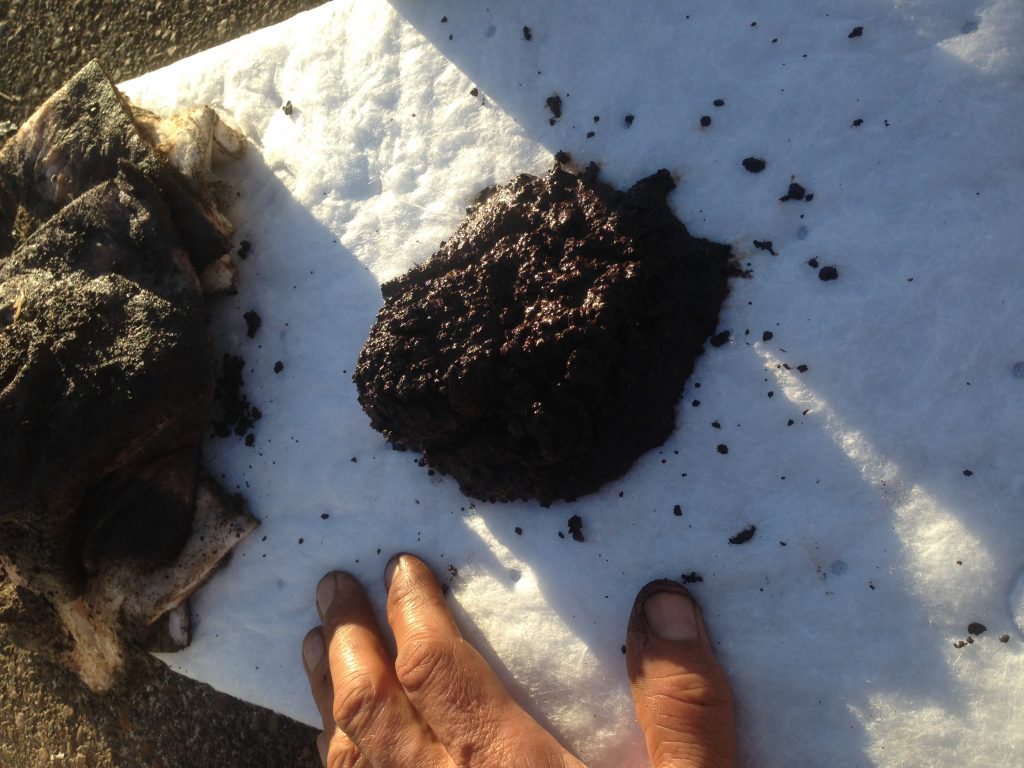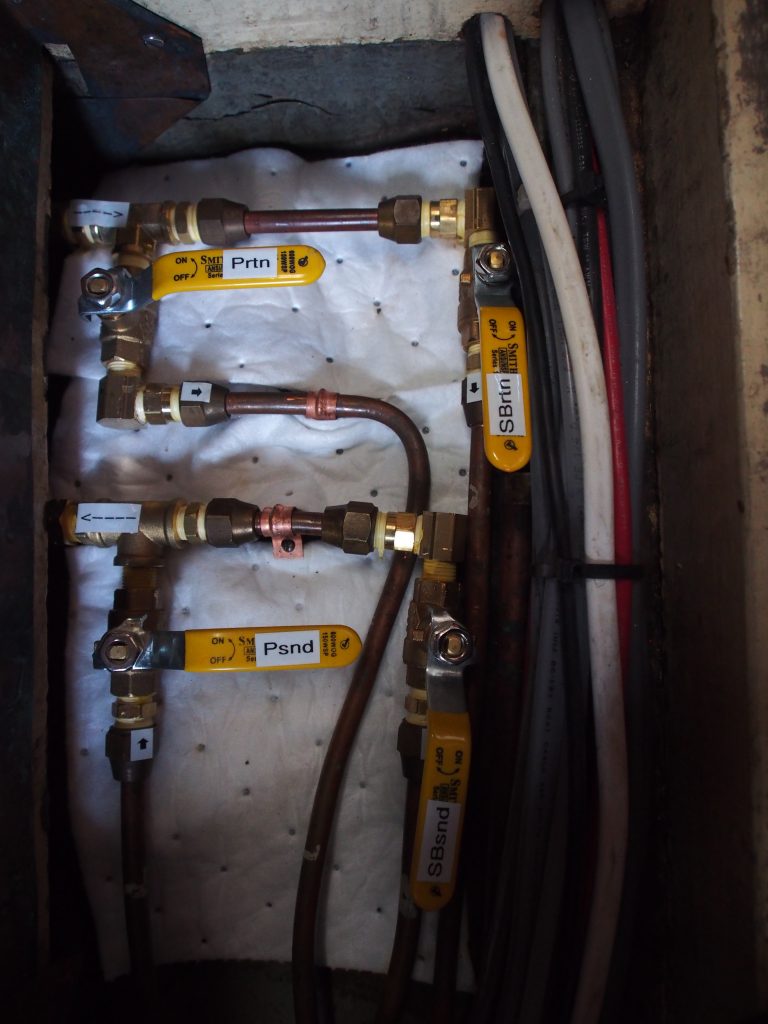Now that we’re back from cruising, it’s time to clean, repair, and restore Apropos. Being in the tropics for almost 2 years and sailing 16,000nm in the ocean is hard on a boat. We had every nook and cranny of the boat packed–under floorboards, under cabinet drawers, the v-berth (“garage”), etc. The first thing I did was to remove a lot of “stuff” and give the boat a thorough cleaning. A solution of tea-tree oil and vinegar was used to wipe down all the walls and inside cabinets and drawers. Next I tackled some of the recent problems related to fuel. I emptied both fuel tanks and scooped out the debris at the bottom. Almost all the refueling outside the US was done with jerry cans and never did we see any sign of dirty fuel in the bottom of the cans, so I assume the debris was from the growth of microbes. I always add a small amount of Biobore fuel additive when refueling, but maybe the tropical heat, and having the boat sit in Fiji for 6 months, accelerated the microbe growth. While I had the tanks empty, I also took the opportunity to replace the 4 old gate-style valves with ball valves. Refueling the tanks from empty also allowed me to precisely measure the tank capacity. I’ve always knew the total diesel capacity to be about 120 gallons (from the boat specs), and assumed the 2 tanks were equal capacity. I now know the port tank holds 64.4 gallons and the starboard tank holds 55.6 gallons!


Moving to the outside of the boat, I gave it a good wash to remove the salt that accumulated from the Hawaii to Seattle passage. I also removed some of the solar panels, the dinghy and outboard engine, the life raft and stored them in the garage until they’re needed next summer. Then I stepped back and looked at the poor state of the sun-wreaked varnish and thought about the monumental task “somewhere down the road”.